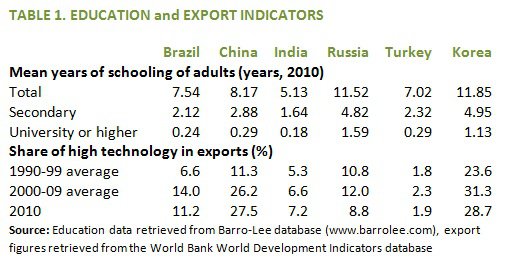The BRICs and Turkey (4)
Turkey cannot sustain the recent high growth performance unless it makes a breakthrough in overcoming the major bottlenecks.
The last time I cited a quite recent study. According to that, countries that jumped their GDP per capita with a strong growth performance over a long time were unable to sustain high growth rates. The analysis of the periods of rapid growth starting in the 1950s showed that the high-growth trend halted as respective countries reached GDP per capita of $10,000 and $15,000. And GDP growth rates decreased remarkably then. This study uses a database which is often cited in this type of studies: the Penn World Table developed by the Center for International Comparisons at the University of Pennsylvania. The data for 2010 was recently released. According to this, Turkey’s GDP per capita (at purchasing power parity and at 2005 prices) in 2010 was $10,438.
Two critical indicators
The study identified two characteristics countries that were able to avoid the middle income trap had in common: First, the share of the population with secondary education and higher (university and higher) was higher compared to the countries that were stuck in the middle-income trap. Second, high-tech products had a larger share in exports compared to the countries in the middle-income trap. The table below compares the BRICs, Turkey and South Korea in terms of these two indicators. The data was retrieved from the databases used in the study.
The message could not be any clearer. It is much in evidence how Korea, taking departure from the same level as Turkey, closed the income gap with advanced countries while Turkey went round in circles. The picture becomes even more blatant when the savings and investment statistics I cited before are added.
Unfortunately, Turkey cannot sustain the recent high growth performance unless it makes a breakthrough in overcoming the major bottlenecks. You might ask how high growth rates were attained so far despite these bottlenecks. The answer would be that, the transient trend of high growth rates in the recent period was not exceptional but quite common for many countries; it was not unique to Turkey. I will present the results of another relevant study on Saturday.

This commentary was published in Radikal daily on 17.01.2013




